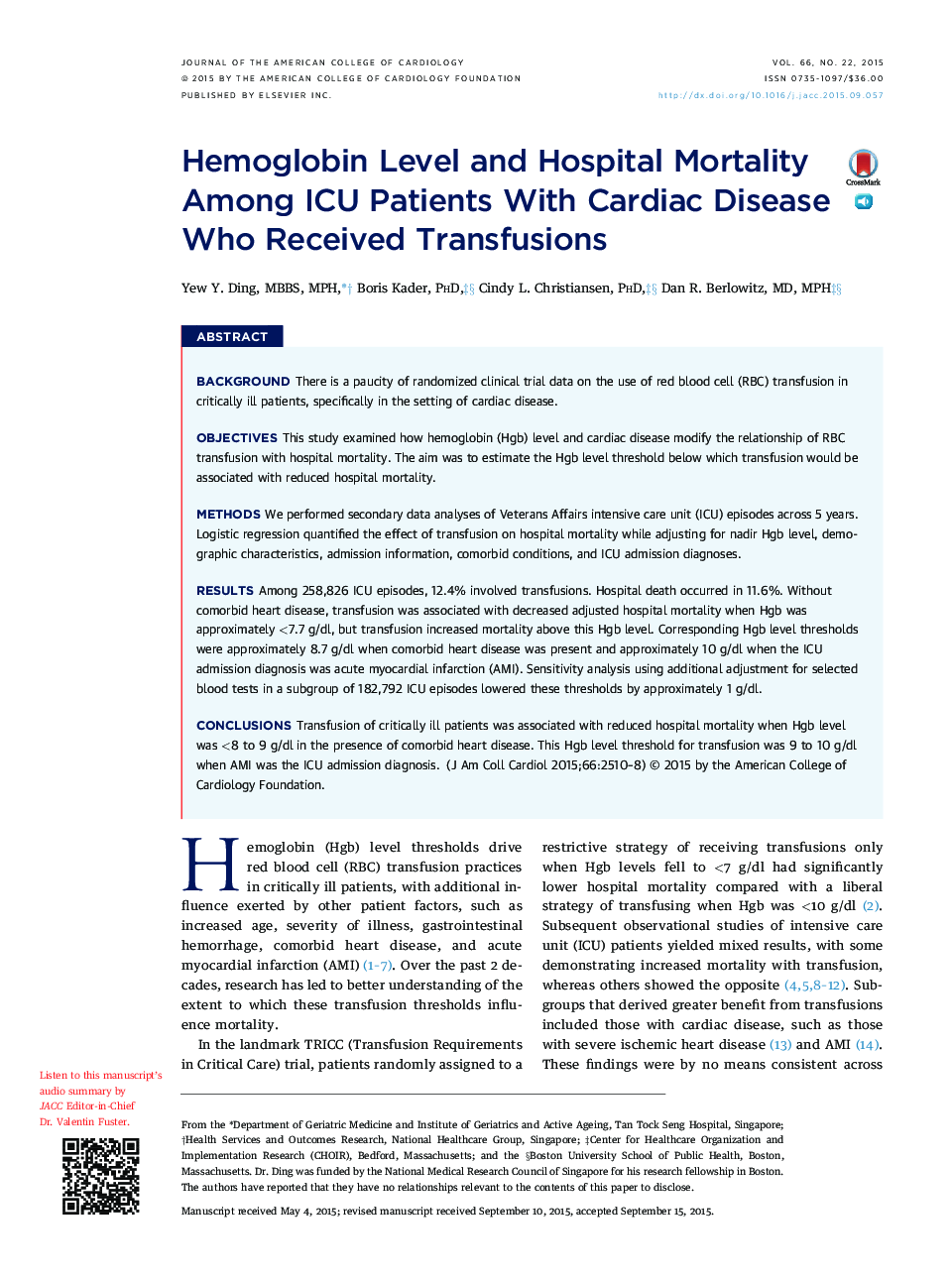| Article ID | Journal | Published Year | Pages | File Type |
|---|---|---|---|---|
| 5982021 | Journal of the American College of Cardiology | 2015 | 9 Pages |
BackgroundThere is a paucity of randomized clinical trial data on the use of red blood cell (RBC) transfusion in critically ill patients, specifically in the setting of cardiac disease.ObjectivesThis study examined how hemoglobin (Hgb) level and cardiac disease modify the relationship of RBC transfusion with hospital mortality. The aim was to estimate the Hgb level threshold below which transfusion would be associated with reduced hospital mortality.MethodsWe performed secondary data analyses of Veterans Affairs intensive care unit (ICU) episodes across 5 years. Logistic regression quantified the effect of transfusion on hospital mortality while adjusting for nadir Hgb level, demographic characteristics, admission information, comorbid conditions, and ICU admission diagnoses.ResultsAmong 258,826 ICU episodes, 12.4% involved transfusions. Hospital death occurred in 11.6%. Without comorbid heart disease, transfusion was associated with decreased adjusted hospital mortality when Hgb was approximately <7.7 g/dl, but transfusion increased mortality above this Hgb level. Corresponding Hgb level thresholds were approximately 8.7 g/dl when comorbid heart disease was present and approximately 10 g/dl when the ICU admission diagnosis was acute myocardial infarction (AMI). Sensitivity analysis using additional adjustment for selected blood tests in a subgroup of 182,792 ICU episodes lowered these thresholds by approximately 1 g/dl.ConclusionsTransfusion of critically ill patients was associated with reduced hospital mortality when Hgb level was <8 to 9 g/dl in the presence of comorbid heart disease. This Hgb level threshold for transfusion was 9 to 10 g/dl when AMI was the ICU admission diagnosis.
